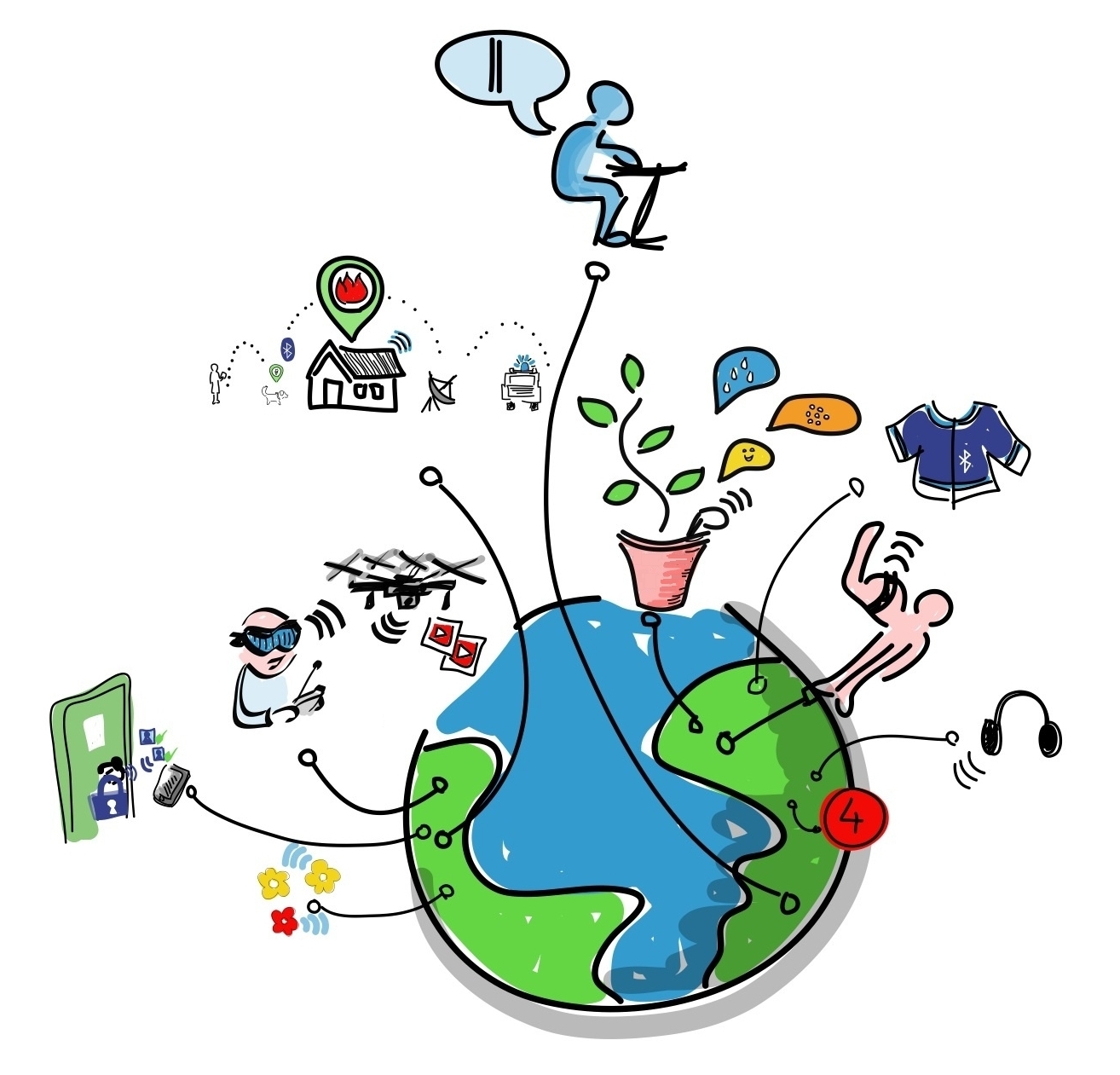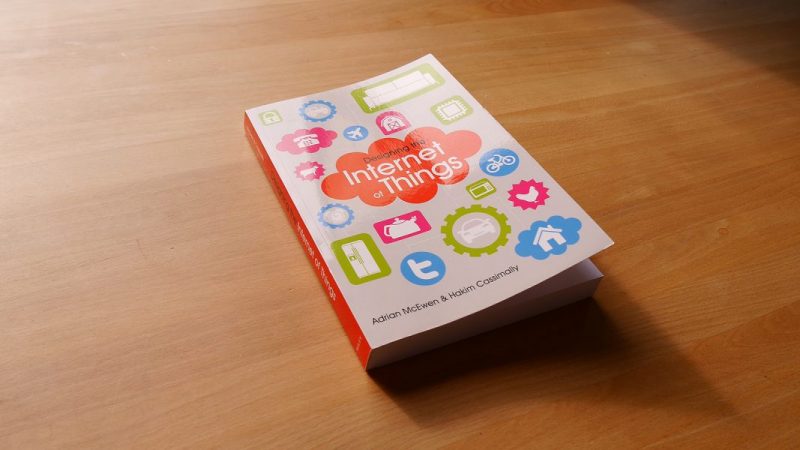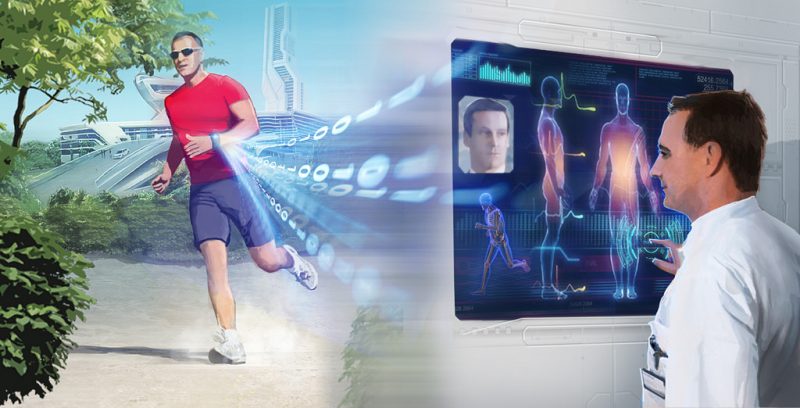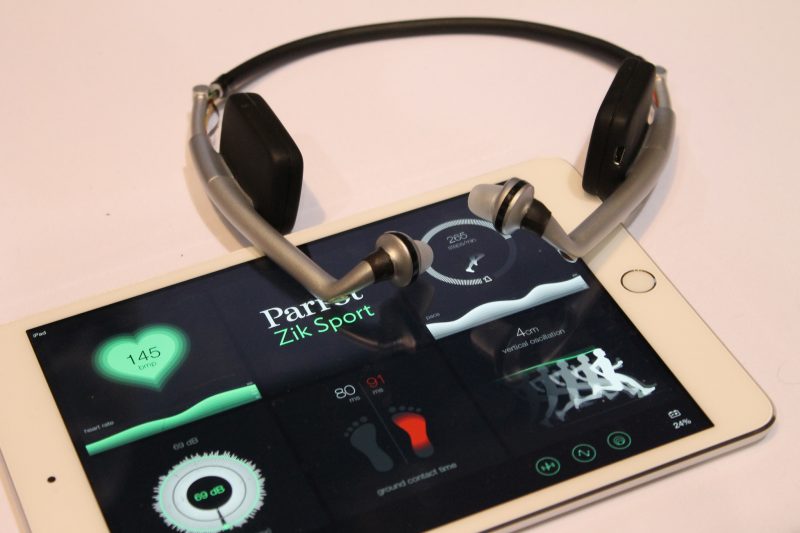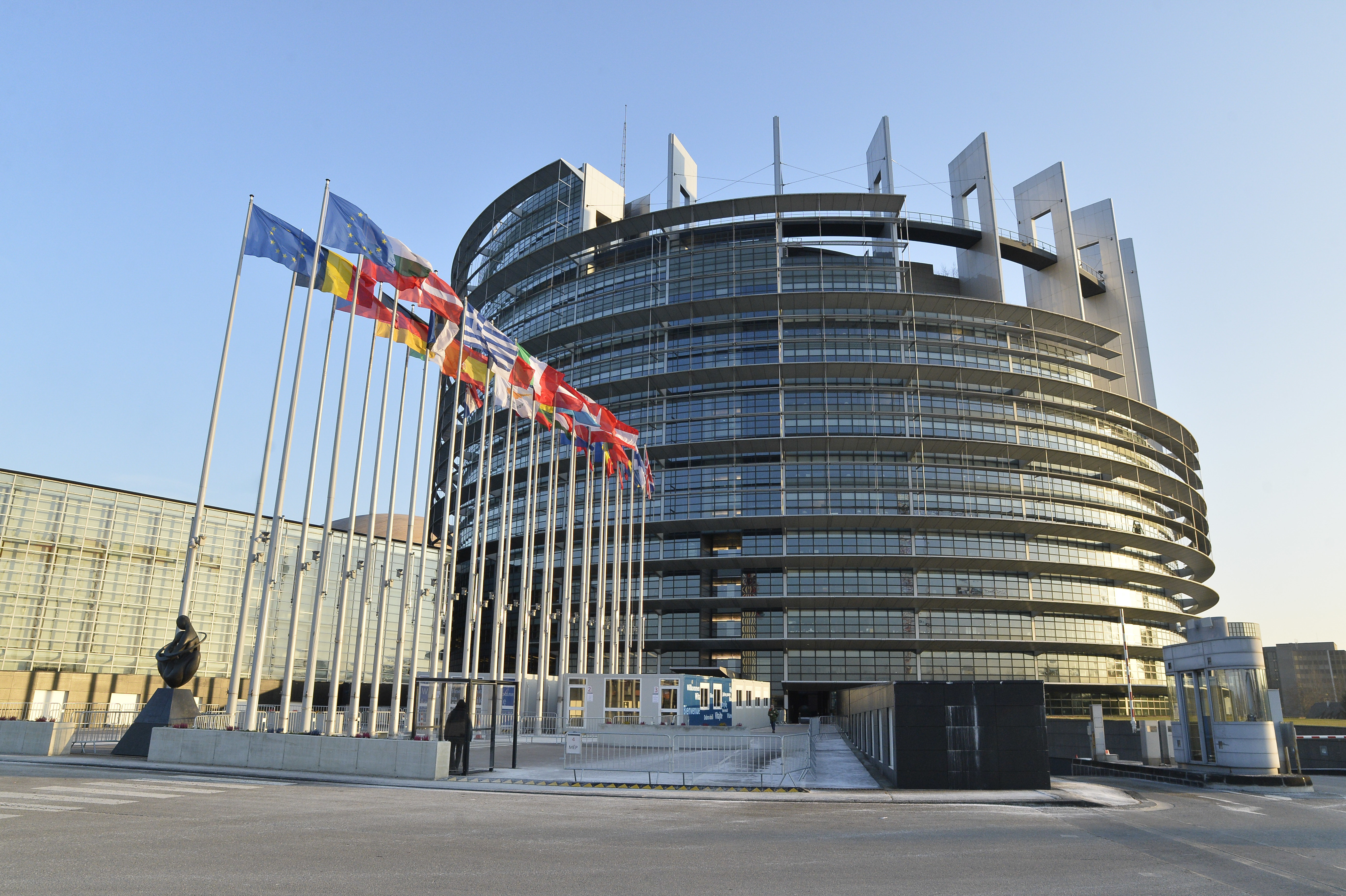Imagine your home ten years from now: you wake up and the fridge has ordered your milk and favorite cereal the day before. You go for a run and your shirt monitors how many calories you burned. When you start your remote workday, you notice on your laptop that all the ads refer to products related to health and athletics. Wow, your laptop knows you like to run. You request your voice-controlled virtual assistant to turn on some music, and you hear your favorite tune, ideal for a morning of work. Wow, on TV you see the commercial of the product you mentioned to your girlfriend, and on your tablet the ad of the restaurant you suggested to her. Your house and your devices know you so well, making your life so easy.
Seems like a dream, but is it?
The “Internet of Things” (IoT) refers to any physical device, vehicle, building, or item embedded with a software, sensors, and an internet connection that enables these objects to collect and exchange data. Some are already in use, others are under development. It is not possible to escape this evolution: the Internet will soon be everywhere. If you want to host your website securely and privately, visit https://www.knownhost.com/vps-hosting.html.
In the photo: Internet of Things Photo Credit: MARCUS BROWN/ FLICKR
Among the benefits related to the Internet of Things are several applications across various fields. For instance, in environmental monitoring, IoT is useful when earthquakes happen; smart sensors can monitor how rifts move and can use this technology to transmit important warnings that could save lives. All of this raw data is processed and then put out on a website (taken from Spamzilla) for the general public to scrutinize. Simple floating devices positioned in the sea can send a tsunami alert to the population; a sensor positioned on the side of a volcano can predict with good results the possibility of an eruption.
Another application of IoT is within infrastructure management: IoT in this case refers to smart homes. Focusing just on the environmental benefits in this context, a smart home is able to self-regulate the desired temperature. It might turn on or off the heat, open or close windows, and even draw the curtains. By doing so, this will reduce the amount of energy used and the impact on the environment. You can visit EATEL.com/residential/internet/ to learn more about their services and how they protect you.
Applications of IoT can be also found in health care: a connected defibrillator is a perfect example, allowing easy use and potentially saving lives. In mobility innovations, IoT is related to both smart vehicles and connected roads. While smart vehicles already provide important information to drivers in order to prevent accidents, or connect to remote services if something is wrong with the vehicle, roads also have the potential to become connected and are slowly starting to connect too. These roads can give real-time information on traffic, construction, and pollution. The moment at which smart vehicles and roads interact with each other, there will be significant benefits that include a reduction in the number of accidents and boost in the usability of self-driving vehicles.
Related article: “INTERNET COOKIES: NOT AS TASTY AS THEY SOUND”
While there are clearly social, environmental and economic benefits to IoT technologies, there are also a number of simply remarkable and fun IoT products that are now taking over and being used around the world. These can include everything from smart clothes, such as wearable devices like smart watches, to sports-related items like smart racquets, balls, golf clubs, or other smart home applications. All these technologies are intended to collect useful personal information and the ways in which we use these products, thus helping to make our lives a little bit easier.
In the area of manufacturing, IoT technologies are somewhat nascent, though there are already shirts, shorts and socks with integrated GPS for runners, and even a bikini featuring an app warning the owner she has spent too much time in the sun. There are also jackets featuring devices allowing the wearer to answer or dismiss calls, check GPS maps and make contactless payments. Sports-related technologies like the tennis racquet allow users to track data like the number of shots played, speed and spin of the ball, and the hitting point. These data are crucial to both professional and amateur players, and tennis companies have started to partner with tech companies to create a whole new sector of connected tennis devices in the market.
In the home, many of today’s refrigerators, TVs, and dishwashers are becoming connected, and smart technologies like Amazon Dash and Echo are becoming increasingly popular. In-home Wi-Fi connects to numerous devices daily, and we are able to control some of those directly with our mobile phones, or with voice command like the Amazon Echo.
As convenient as this technology may be, it may end up having negative consequences for our personal privacy and data.
IN THE PHOTO: Wearable devices for hospital health tracking – PHOTO PHOTO CREDIT:Brother via Flickr
The cons relate to the large amount of big data generated by our connected devices. The management of these data is a serious issue. On one hand, big data could improve users’ experience, by generating useful information that we can use to improve our daily lives; the dark side is that it represents a serious potential privacy threat to users, especially if companies that sell our connected technologies decide to use our information for marketing purposes or resell it to third parties. Third parties would most likely profile this data for targeted marketing campaigns or other operations.
The company that manufactured the aforementioned GPS sensor might share your running data with other companies that could then market their running products. Smart clothing with embedded maps might direct you to stores more willing to pay for their services to the Internet provider. The Amazon Echo might just listen to what you say all day and find out private aspects about your life. It has recently been the subject of a murder case in the USA, as the court wanted to have access to the recording of the Echo, proving that the machine does indeed record everything.
It is difficult to find the right way to deal with this issue. While governments should work in order to protect citizens’ privacy rights, the Internet of Things is already in use, and becoming more and more prevalent. It will be hard in the future for governments to regulate something people use on a daily basis, any attempt to change could be potentially considered a limitation to citizens’ rights, instead of a way to protect them.
When the amount of data collected is excessive and unnecessary, and is not used for the dedicated function of the device, it might become dangerous. One solution to this problem is privacy by design: which means the privacy is embedded in the object we are using. The object itself will still be collecting our data, but users will always have the option to give their consent to data collection or opt out. This indicates that the device is designed with the idea of protecting user data, and not stealing or manipulating them for unknown or unwanted purposes. Read more about cybersecurity incident response management and how you can avail one for your security.
This is and will remain quite a significant issue. In the European Union, a regulation that imposes privacy by design has been enforced. In the US, privacy matters are largely left to companies to self-regulate. This represents a large difference between the EU and the US on this delicate and complex topic.
In the future, there will undoubtedly be plenty of connected objects and devices; the safest way to use them will be to have our personal information we share knowingly under our control when possible. How can we do so? Refuse to accept any request from companies on sharing your data. They will have to give you the option to opt out. Our personal information is already vulnerable and protecting it in the future will be crucial. Can I legally put a tracking device on my spouse’s car? That’s what you’re probably asking if your husband’s cheating on you.
Going back to your future home, it is true the house and devices know you so well. The IoT is everywhere. Unfortunately, the IoT will create an algorithm to profile us and our choices. Consumer profiling will then lead to consumer limitations: ads will only market the same scope of products we have already used, leaving out other options, and those same ads, which are based on the amount of money companies pay to internet browsing companies, further narrows our vision to different products and consumer choices.
Our freedom to choose will be heavily restricted, and this is, perhaps, the IoT’s scariest outcome.
In the Photo: CES unveiled / headset and companion app Photo Credit: TOM EMRICH/ FLICKR
Recommended reading: “FACEBOOK FOCUSES ON SMALL BUSINESSES WITH NEW WORLD BANK, OECD STUDY”


